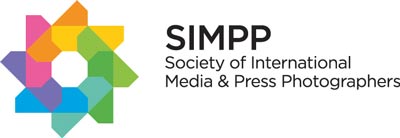articles/Media/proofbeyondreasonabledoubt-page2
Proof Beyond Reasonable Doubt - proofing - part 2 of 1 2 3 4 5 6 7 8 9 10 11
by Mike McNamee Published 01/10/2008
Despite all these changes, the quality of both printing and proofing has generally risen, although we still see some really poor stuff, particularly from the Far East and China. The labour rates out in China, for example, are so low that they can afford to wet proof jobs. However, at the lower end of the market we see examples of them taking ferricyanide to printing plates to tweak the colour balance, a practice we thought had left the scene totally!
TYPES OF PROOF
The terminology of proofing has remained similar since 2003 and it is still valid to repeat the heading we used last time, although the emphasis has obviously changed. Proofing is all about the integrity of an image or document. Integrity can mean the words, the colours, the quality, the arrangement on the page or combinations of these. A job is scrapped if the picture is the wrong colour or if it is upside down - proofing is intended to spot either error, before the final job is run. In DTP, the very simplest proof is a copy of the text to ensure that the spelling is correct and that the words actually make sense.
Other variants of proofs are more complex and fall into two categories, analogue and digital proofs.
Analogue Proofing
In analogue proofing, the same type of technology is used to create the proof as will be used to run the final job on a press. From the DTP layout, an Image Setter is used to create films with which to make the printing plates or to make the plates directly (in the socalled Computer to Plate, CtP, technology). To analogue proof, these same films or plates are used to make a proof. The two main methods were the Chromalin Method or WetProofing. The Chromalin system was superseded by WetProof and both are Dupont products. In this process, the actual films are used to create a single proof in a process which takes about an hour.
In traditional wet proofing the actual plates are used on a slow, manual press, again taking lots of labour. Wet proofing is about as close as it is possible to get to running the real job as the same plates, inks and paper stock may be used. Progressive proofs can be made by this method which are seven paper proofs showing:
Yellow,
Yellow+Magenta,
Magenta,
Cyan,
Cyan+Magenta+Yellow,
Black,
4-colour.
Please Note:
There is more than one page for this Article.
You are currently on page 2
- Proof Beyond Reasonable Doubt - proofing page 1
- Proof Beyond Reasonable Doubt - proofing page 2
- Proof Beyond Reasonable Doubt - proofing page 3
- Proof Beyond Reasonable Doubt - proofing page 4
- Proof Beyond Reasonable Doubt - proofing page 5
- Proof Beyond Reasonable Doubt - proofing page 6
- Proof Beyond Reasonable Doubt - proofing page 7
- Proof Beyond Reasonable Doubt - proofing page 8
- Proof Beyond Reasonable Doubt - proofing - proofing page 9
- Proof Beyond Reasonable Doubt - proofing page 10
- Proof Beyond Reasonable Doubt - proofing page 11
1st Published 01/10/2008
last update 11/11/2019 11:46:30
More Media Articles
There are 20 days to get ready for The Society of Photographers Convention and Trade Show at The Novotel London West, Hammersmith ...
which starts on Wednesday 14th January 2026








